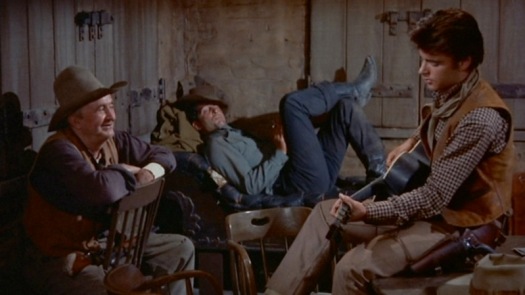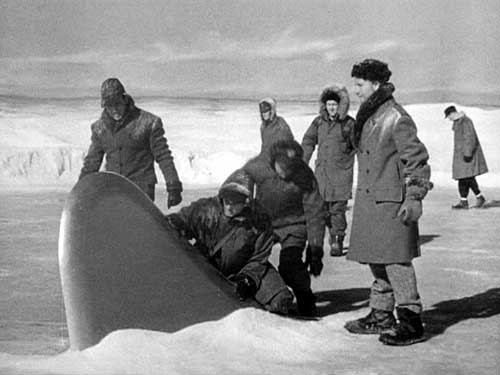In my opinion, Howard Hawks’ HIS GIRL FRIDAY is one of the greatest screwball comedies ever made, a full speed ahead movie that’s pretty much got everything a film fan could want. A remake of the 1930 Lewis Milestone classic THE FRONT PAGE (itself an adaptation of Ben Hecht and Charles MacArthur’s Broadway smash), Hawks adds a delightful twist by turning ace reporter Hildy Johnson into editor Walter Burns’ ex-wife… and casting no less than Rosalind Russell and Cary Grant in the roles!
The two stars are in top form as the bickering ex-spouses, with their rapid fire banter nothing short of verbal dynamite. Grant in particular spouts off words quicker than a rapper (where did he get all that wind!) and his facial expressions and comic squeals (reminiscent of Curly Howard!) are simply priceless! Roz is more than his match as Hildy, with one lightning-fast zinger after another. Miss Russell stated in her autobiography she didn’t think her part was funny enough, so she hired a writer to craft some good quips for her character. Hawks didn’t mind, and encouraged the pair to ad-lib at will!
There’s a lot to love for classic movie fans, including some laugh out loud in-jokes sure to leave you in stitches. Charles Lederer turns his screenplay from the original 1930 version on its ear by changing Hildy’s gender, which in turn gives Ralph Bellamy a chance to shine as Hildy’s fiancé Bruce Baldwin, a boring insurance salesman from Albany. The contrast between high-octane, high-strung Grant and gullible bumpkin Bellamy is vast as the ocean, and Ralph’s just as funny as the two stars. The press room is packed with character actors like Cliff Edwards , Porter Hall , Frank Jenks, Roscoe Karns , Regis Toomey, and Ernest Truex, as big a bunch of reprobates as your likely to find. John Qualen plays the meek murderer Earl Williams, Gene Lockhart and Clarence Kolb represent the crooked political hacks determined to hang Williams, Abner Biberman essays Grant’s devious but dumb right-hand man, Alma Kruger is a scream playing Bellamy’s oh-so-proper mother, and veteran comic Billy Gilbert has a juicy bit as the governor’s messenger.
I’d like to single out Helen Mack here for her dramatic turn as the tortured, doomed prostitute Molly Malloy, whose kindness she showed to Earl Williams is exploited by the press hounds. Miss Mack, star of 1933’s SON OF KONG, is the only member of the cast who doesn’t get to play for laughs, instead giving an emotional performance as Molly, dogged by the newspaper reporters and sacrificing herself to save the now escaped and hidden Earl by doing a swan dive out the window. While everyone around her is in full comedy mode, she adds some gravitas to the proceedings. It must have been tough to keep a straight face amidst all that comedic talent, but Helen Mack pulls it off, and deserves some recognition for her efforts.
Hawks certainly keeps things moving with his fluid camerawork, bringing what could’ve been too stagey to roaring life. And yes, there’s that trademark overlapping dialog of his, with Grant and Russell constantly talking over each other during their exchanges. Hawks made some great films in virtually every genre, but of all his screwball comedies (TWENTIETH CENTURY, BRINGING UP BABY, BALL OF FIRE, I WAS A MALE WAR BRIDE, MONKEY BUSINESS), I love HIS GIRL FRIDAY the best. It’s a sure-fire cure for the blues, a non-stop frolic of fun, and without question a screen classic you can’t afford to miss.





























